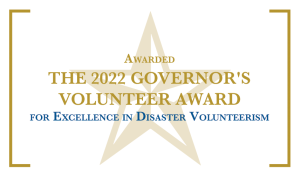Cooperation in Search and Rescue: Volunteer Teams and Paid Agencies
In the discipline of search and rescue (or SAR), more assistance generally means a more effective operation. Availability of search technicians and equipment is a major determining factor in the speed at which aid can be rendered. This is why asking for outside assistance in search missions can truly be the difference between life and death. Cooperation between volunteer teams and paid agencies is a win-win situation for a number of reasons.
Some SAR teams are composed of paid responders and others are volunteer-based. While there are some paid teams with a focus on search and rescue, SAR technician is just one of many of their roles for the majority of these responders (such as firefighters and police officers). For more information on the different types of SAR teams, check out TEXSAR’s blog post on What is Search and Rescue (SAR)!
The paid agency is the party that initially receives the request for a search and rescue mission, and they are responsible for coordinating and executing the overall operation. This means that they determine when and where the response takes place as well as who they want to involve. They may choose to call in extra help from volunteer search and rescue teams who serve as force multipliers to leverage their impact.
While volunteers do work under the authority of the requesting agency, they do so indirectly on an individual basis. Here’s how this works: the highest-level commanding authority of the volunteer organization acts as both the operational authority for their volunteer team as well as liaison between the two organizations. The title of this individual varies from organization to organization, but at TEXSAR we refer to them as the Chief of Party. Individual SAR technicians report directly to their Team Leader, and the Team Leader reports directly to the highest-level commanding authority of the volunteer organization. Teams that operate under FEMA’s Incident Command System (ICS) should adhere to these two principles: unity of command (each person reports to only one supervisor) and chain of command (there is an orderly line of authority). Teams are designed like this not only to comply with ICS recommendations but also for maximum efficiency.
One of the biggest advantages to inter-agency cooperation is the pooling of resources that this allows for. The quantity and array of responders, vehicles, equipment, and KSAs (knowledge, skills, and abilities) available for the mission increase when shared. This is especially useful in a couple of situations. The first is when the requesting agency, or the agency primarily responsible for the incident response, has a limited number of their own individuals that can assist on a mission. More searchers means more ground is covered in a shorter amount of time. The second is when the requesting agency doesn’t have access to the assets they need to effectively carry out the search. This may include responders with certain specialities (such as K9, flood and swiftwater, or drone operations) or equipment (such as vehicles, technology, or machinery).
Neither of these situations are uncommon for agencies in small and rural areas. While their access to personnel, assets, and budget may be more limited than those of larger jurisdictions, the incidents they need to respond to are not necessarily less complicated than those of agencies in larger jurisdictions. This is why it’s vital that volunteer SAR teams exist! Agencies can leverage the resources that volunteer groups are able to provide at a moment’s notice.
When managed well, collaborative operations between paid and volunteer organizations will increase the efficiency and efficacy of the mission. Volunteer SAR groups exist because there are people out there who are willing to lend their time and labor to public service efforts, so these volunteer responders want to be called upon when needed. Calling for assistance can help agencies and volunteer SAR teams achieve the mutual goals of quickly locating subjects, rendering aid, and bringing them to safety.
Written by: Ashley Abbott, TEXSAR Member


